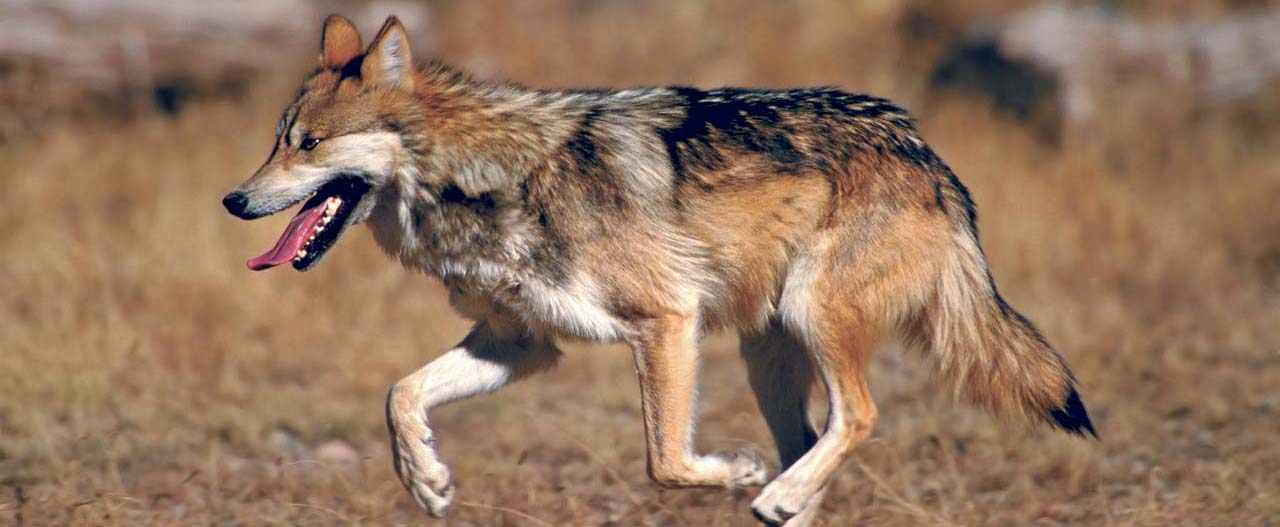
Protecting Mexican Wolves
Mexican gray wolves belong to one of the smallest, rarest, and most genetically distinct subspecies of gray wolf. In 1976, the U.S. Fish and Wildlife Service first listed the Mexican wolf as a protected species under the Endangered Species Act. In 1978, it was reclassified as part of the endangered status granted to all gray wolves throughout the country. In 1998, with no wild Mexican gray wolves in the U.S. and only a few wild Mexican gray wolves in Mexico, USFWS released 11 captive-bred Mexican wolves. WELC litigation prompted these releases through a settlement with USFWS.
These Mexican wolves were released as a “nonessential experimental population” with a goal of achieving a population of 100 Mexican wolves in a 5,000-acre area in Arizona and New Mexico. Despite a population of 113 Mexican wolves in the wild as of 2016, USFWS recognizes that the population’s failure rate is too high for natural or unassisted population growth. Wildlife biologists have concluded that the original goal of 100 Mexican wolves in the wild will not maintain a viable, self-sustaining population.
Three hundred Mexican wolves currently exist in captivity, some of which could be reintroduced into the wild. However, the genetic makeup of this group is equal to only 20 wild wolves, which is hugely problematic for establishing a healthy wild population and gene pool.
In January 2015, USFWS issued a final rule that reclassified the Mexican gray wolf as an endangered non-essential experimental sub-species of the gray wolf, and issued a final rule revising ESA considerations for the species. These rules and designations cap the population of Mexican gray wolves in Arizona and New Mexico at a level too low for recovery, banish them from needed habitat, and make it easier for federal agents and private landowners to kill them.
WELC won a lawsuit to force the U.S. Fish and Wildlife Service to go back to the drawing board on its deeply flawed 2015 Mexican wolf rule. The court rejected the Service’s distortion of science to fit the political goals of increasing allowable killing, setting a population cap, and limiting the wolves’ range. The judge found the rule further imperiled the endangered species, and the Service illegally failed to reconsider the wolves’ designation as a “non-essential” population. We’ll keep tabs on how the new rule develops.
In addition, the Fish and Wildlife service did Mexican wolves a disservice with its Nov. 2017 recovery plan — one of the most important and critical tools for species conservation under the Endangered Species Act. These plans serve as road maps to recovery that outline where the U.S. Fish and Wildlife Service needs to go and how best to get there.
But to work, these plans must incorporate the best available science. The Fish and Wildlife Service’s Nov. 2017 recovery plan ignores the best science–including all the published/peer reviewed literature–on the conservation needs of the subspecies, is purely a political document, and represents a significant departure from the agency’s 2012 findings (published in a draft recovery plan). In 2018, we challenged this heinous document in court. The case is ongoing and we will provide updates here.
Related Documents
- Mexican wolf 10(j) scoping comments (6.15.20)
- Mexican wolf recovery plan victory news release (4.2.18)
- Final 10(j) Endangered Species Act decision (4.2.18)
- Mexican wolf recovery plan complaint (1.30.18)
- Mexican wolf recovery plan filing news release (1.30.18)
- Mexican wolf recovery plan notice of intent to sue (12.17.17)
- Mexican wolf Endangered Species Act complaint (7.2.15)




